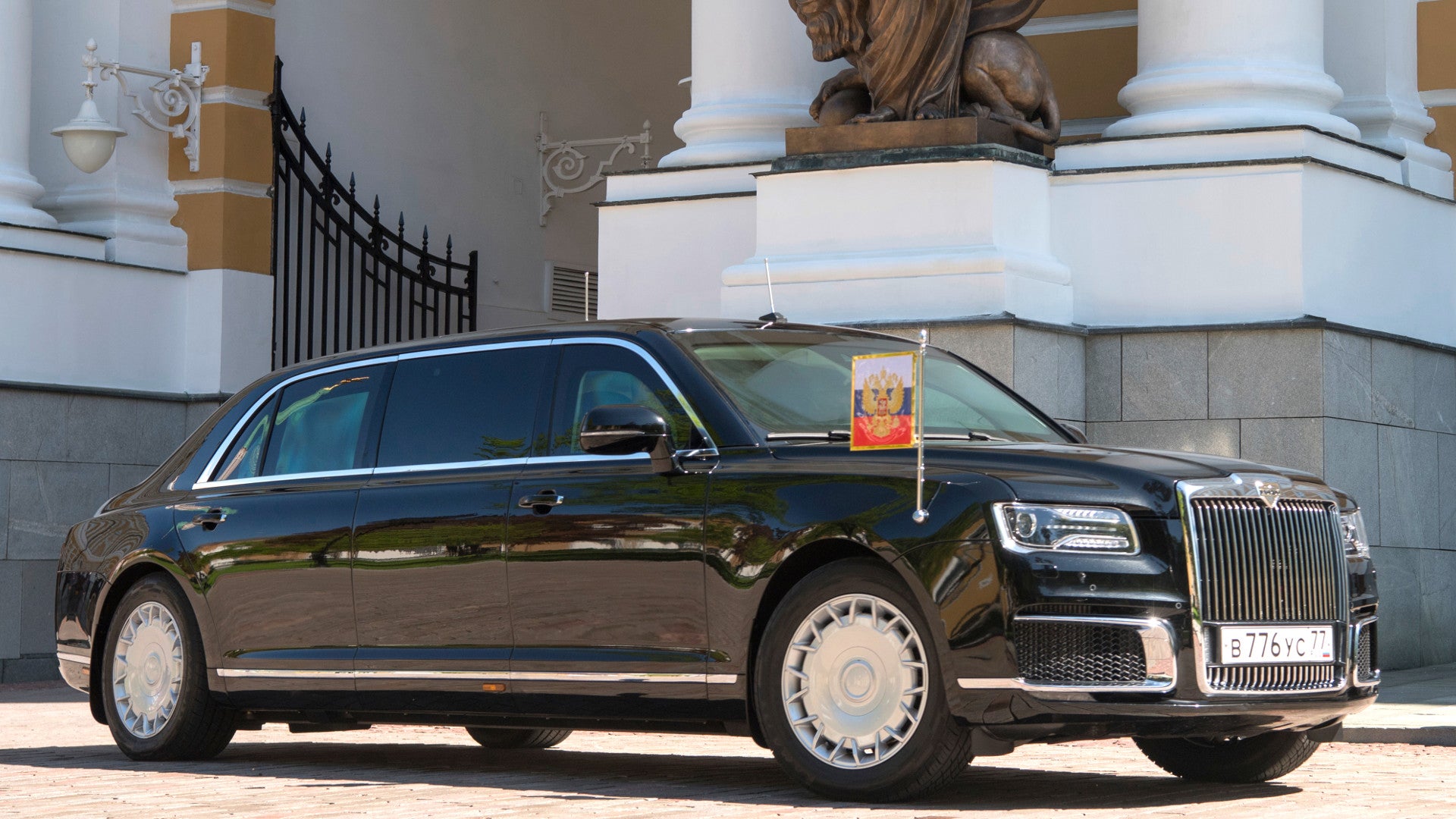Amid controversies and heightened tensions with the United States, the United Kingdom, and other countries
in Western Europe, Russia’s authorities have formally inaugurated Vladimir Putin as president for the fourth time. In a particularly symbolic gesture, the head of state rode to the ceremony in an all-new Russian-made limousine, the first time the country’s head of state has a traveled in a new, domestically produced presidential car since the 1990s.
Russia’s Central Scientific Research Automobile and Automotive Engines Institute – abbreviated NAMI – a government-run automatic research and development organization that dates back to the very beginning of the Soviet Union, crafted the vehicle in cooperation with Sollers JSC, a Russian holding company with stakes in various domestic car companies. The new vehicle replaces the modified Mercedes S600 Pullman the country’s Federal Protective Service, or FSO, had previously operated.
Putin reportedly initiated the program, known as Project Cortege – a relatively archaic word that in English describes a person’s personal retinue or a solemn procession, such as a funeral – after winning his third presidential election in 2012. The limousine is the first in what officials say will be an entire fleet of 14 new “Unified Modular Platform” vehicles for the FSO, including sedans, minivans, and SUVs. Additional examples could go to other Russian government agencies.
“[Putin] has already familiarized himself with the project and has seen its various stages,” Minister of Industry and Trade Denis Manturov told Russian newspaper Izvestia in June 2017. “He even took ‘Prototype A’ for a drive; there wasn’t enough time to show ‘Prototype B’.”

In April 2018, Manturov had warned that the vehicle might not be ready for its debut at Putin’s inauguration as initially planned, but it appears that NAMI and Sollers JSC were able to successfully deliver at least one vehicle for the ceremony. There is the possibility that the limo the Russian president used to take the less than 700-foot ride from the Kremlin’s Senate Building in Moscow to Andreevsky Hall is not in the final, production configuration.
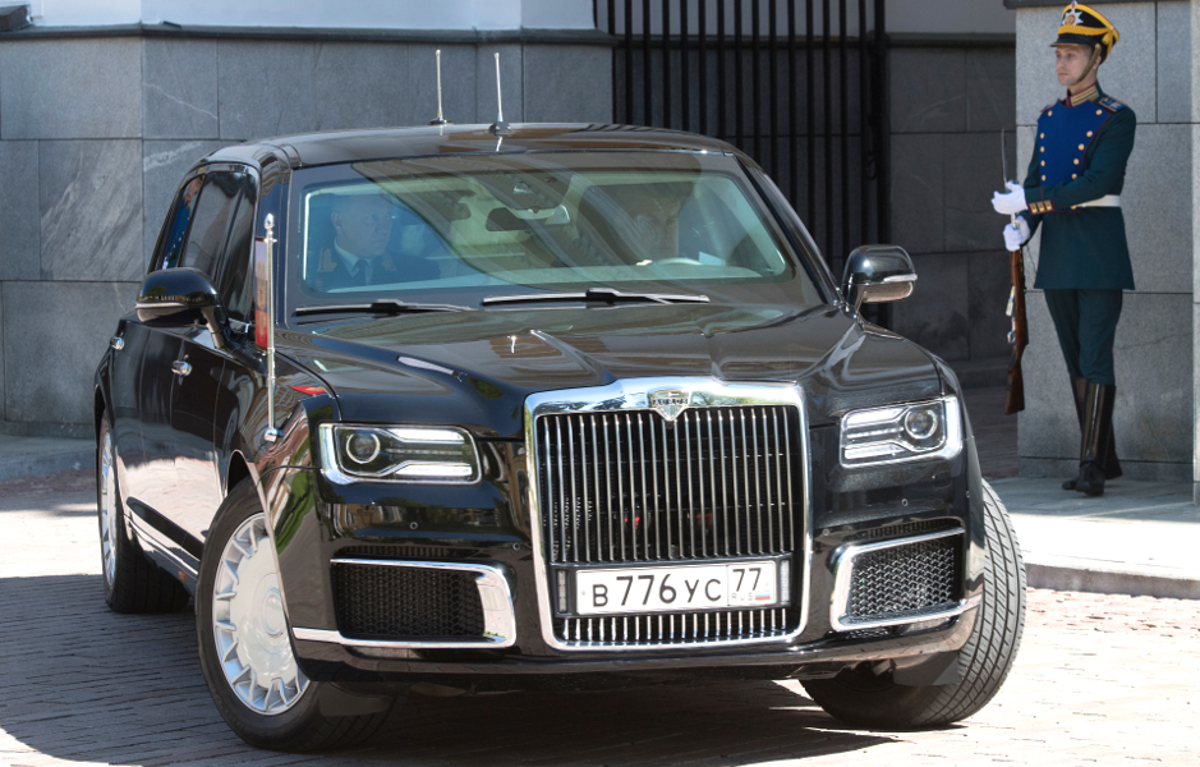
Otherwise, the exact design specifications are classified and there is little information readily available about its likely characteristics and features. Though the vehicle is domestically produced, reportedly, NAMI hired German car firms Porsche and Robert Bosch to help in the development, with the former company supplying a 600-horsepower turbocharged V8 engine. NAMI developed a second, significantly more powerful engine itself and this could be one of the major differences between the A and B prototypes.
Beyond that, the limos have all sorts of other features one might typically associate with high-end luxury vehicles, including a digital dashboard and onboard multimedia system. The pictures that exist so far show an obviously heavy-framed, stretched sedan-type limousine with ornate interiors with significant amounts of wood and leather. In December 2017, we got a look at the similarly opulent interior of Putin’s Tu-214PU presidential plane and you can read about Russia’s executive helicopter fleet here.
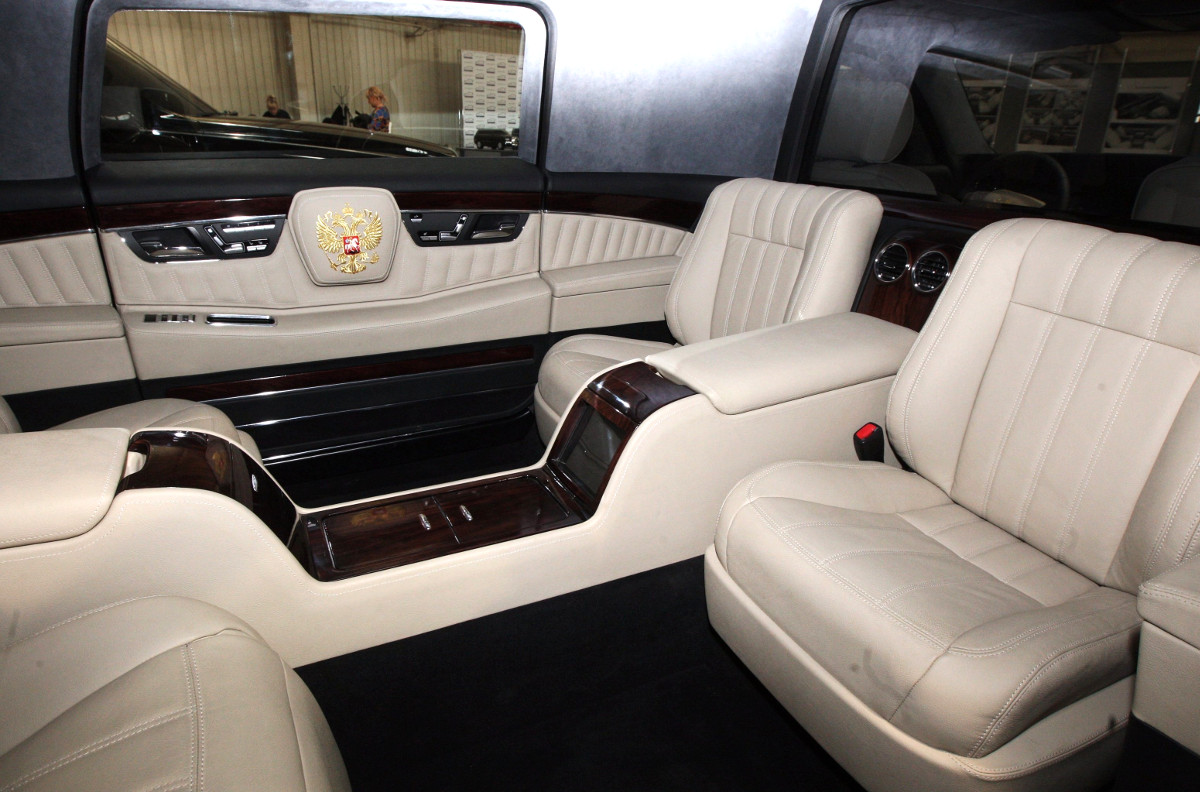
It’s clear that the Project Cortege limo has extensive armor, secure communications equipment, and other self-protection and emergency features to help guard Putin in a variety of different situations. The vehicle outwardly appears less heavily modified than the one the President of the United States uses at present, but its not clear if that actually reflects its ballistic protection or other capabilities.
The American design, colloquially known as “The Beast,” has a number of advanced features, including night and infrared vision driving systems, a completely sealed passenger compartment with independent air supply, and a medical kit that includes a ready store of the president’s blood. It may also have a variety of James Bond-esque self-defense systems, reportedly capable of releasing oil slicks and tear gas, akin to the specialized trucks the U.S. government uses to transport nuclear weapons.
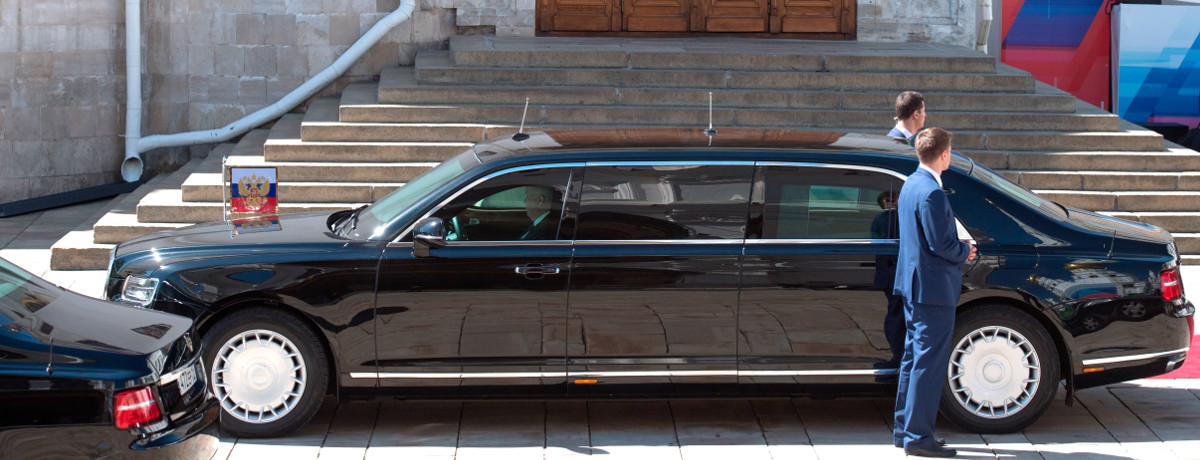
Unfortunately, all of these features and an amazingly high degree of ballistic protection make the American vehicle exceptionally heavy and often difficult to maneuver on city streets. It is possible that the Russians might have opted for a less complex and more manageable vehicle, with other separate security procedures to offset any low level of proection.
Video of Putin’s ride to Andreevsky Hall showed authorities had cleared the streets, and likely the surrounding buildings in the area, of bystanders entirely. A phalanx of officers from Russia’s Federal Protective Service, or FSO, escorted the car to its destination.
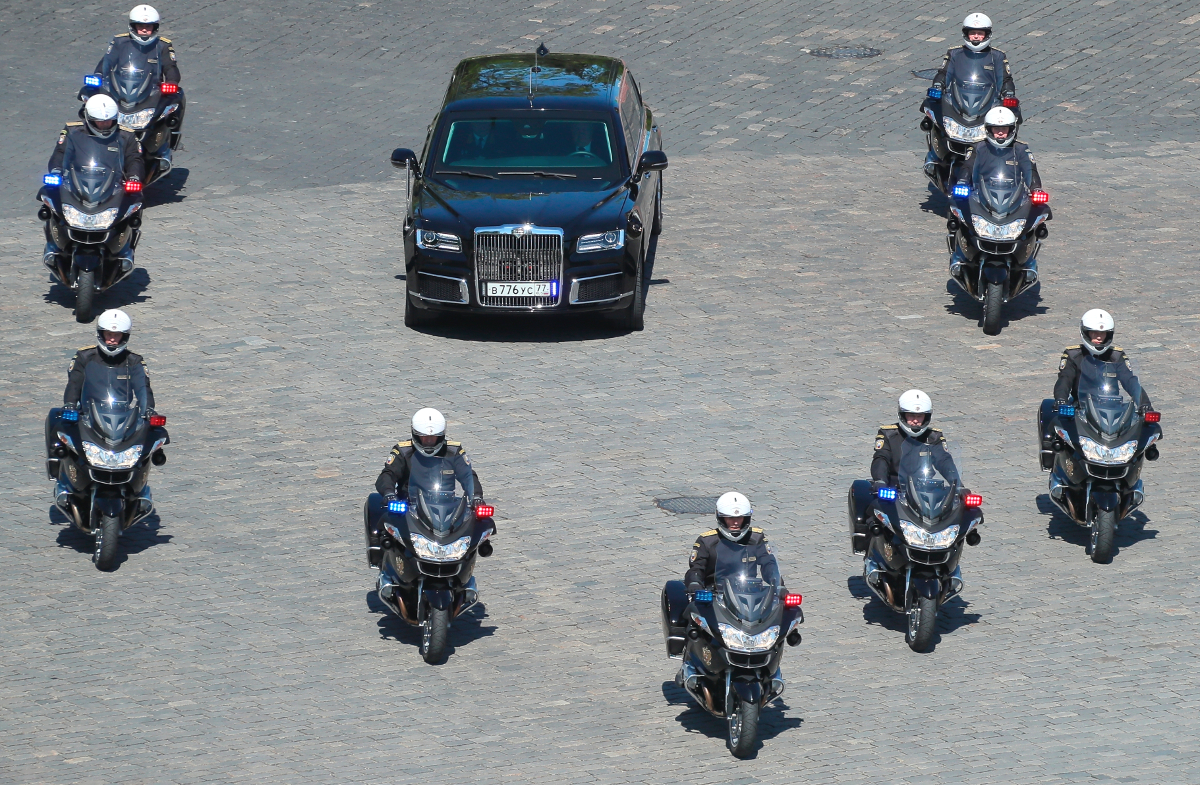
Not seen, but almost certainly nearby, would have been other FSO members, including sedans to try and intercept any hostile vehicles and mounted rapid-reaction elements in vans and SUVs. At present, the organization’s Special Purpose Garage, or GON, which maintains an entire fleet of vehicles dedicated to supporting the president and his closest advisers, contains Mercedes S-class sedans, Mercedes M- and G-class SUVs, Mercedes Sprinter vans, and Volkswagen T5 and T6 vans. All of these feature additional armor and other modifications. As with their American counterparts, they could also carry additional communications systems, electronic warfare systems to disrupt enemy transmissions or prevent terrorists from setting off roadside bombs, teams to dispose of explosives and other specialized tasks, and more robust medical capabilities.
With a less ambitious design, the Project Cortege limo itself could also be cheaper to procure and operate, as well. As of 2017, the Russian government had already put at least nearly $300 million into the development program. Russia has already had to curtail a number of defense and security spending programs in recent years due to international sanctions and general fluctuations in the country’s economy, particularly due to a precipitous drop in the global price of crude oil.
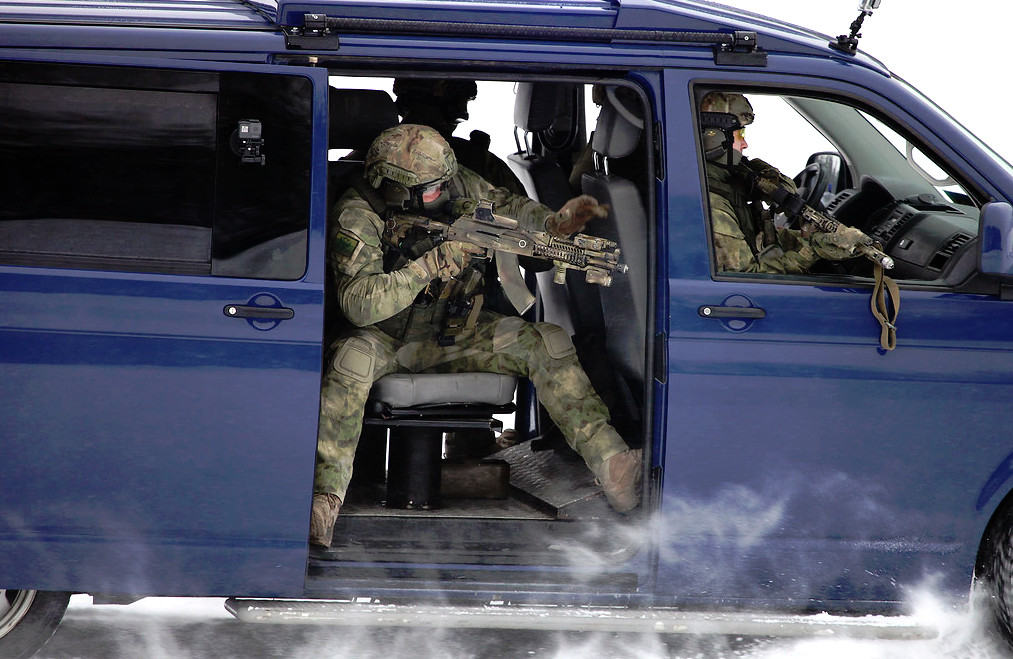
In addition, Russia hopes that Project Cortege will serve as a springboard for the country to re-enter the global luxury vehicle market. Civilian versions of the various Project Cortege designs, which Sollers JSC plans to sell under a new brand Aurus, will be available in small numbers in 2019, with reported prices ranging from $95,500 and $111,500. “Aurus” is an amalgamation of “aurum,” the Latin word for Gold, and “rus” for Russia.
Government budget cuts and a flagging economy may force NAMI and Sollers to scale back those plans, though. Back in 2016, NAMI claimed that it would have produced 5,000 examples of the various Aurus vehicles in total by the end of 2020. If this occurs, it will represent an impressive ability to expand production capacity on Sollers JSC’s part, which only plans to build approximately 200 vehicles in 2019.

But Putin has long made the revitalization of Russia’s automotive industry, both for domestic consumption and international sales, a major priority. He has notably served as pitchman for Russian carmaker Lada on a number of occasions, but those publicity stunts have not always worked out as intended.
In 2010, Putin heavily promoted the Lada Kalina compact car, driving it around the country to show off its supposedly good reliability and performance. As the trip went on, though, locals spotted a large convoy trailing the then-prime minister in his yellow Kalina, with an apparent, visually identical spare following behind, as well as a tow truck pulling a third that had already broken down. Then, in 2011, he had difficulty starting up a new Lada Granta sedan as the press watched on.

Whatever the Project Cortege limousine’s actual capabilities are, it’s hard not to note the significance of a domestically produced presidential vehicle for Putin and Russia as a whole. On March 1, 2018, in an annual state-of-the-union type address, the president made new and pointed appeals to the country’s nationalist sentiments.
“I want to tell all those who have fueled the arms race over the last 15 years, sought to win unilateral advantages over Russia, introduced unlawful sanctions aimed to contain our country’s development: all what you wanted to impede with your policies have already happened,” Putin declared. “You have failed to contain Russia.”
Putting him inside a Russian vehicle rather than a German limousine – regardless of how German-engineered the Project Cortege series might be at the end of the day – is immensely symbolic of the country’s independence from foreign influence. Russia’s presidents had used modified Mercedes S-classes as their primary mode of ground transport since 1995, when then-President Boris Yeltsin stopped riding in the Soviet-era ZIL-41052 limo his administration had inherited from the last premier of the USSR, Mikhail Gorbachev.
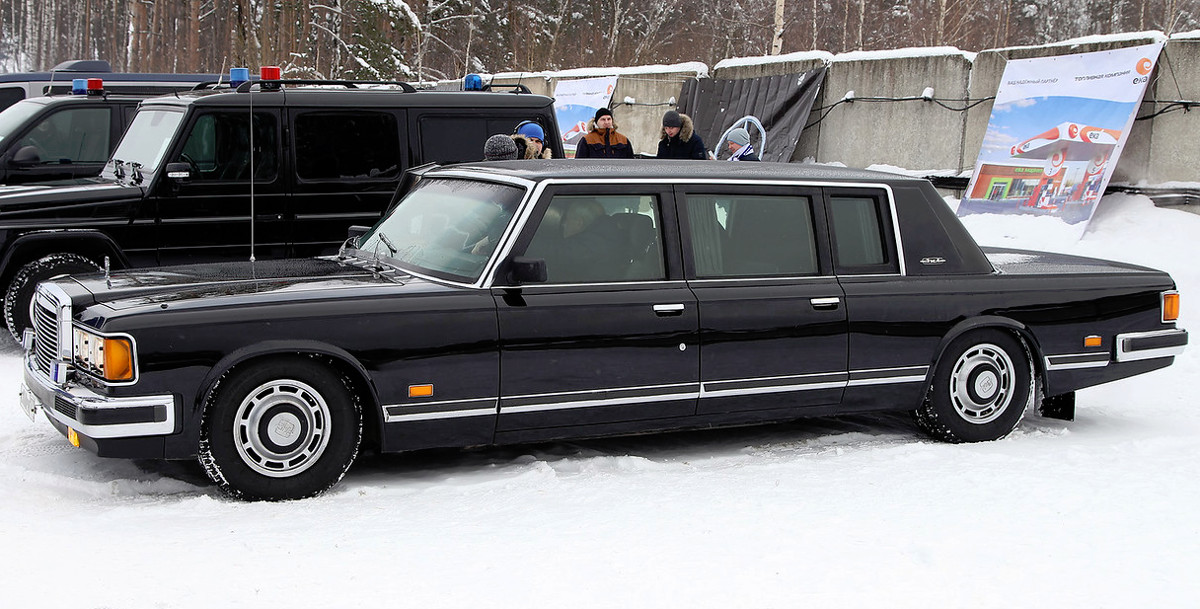
It’s worth noting that The Beast appeared for the first time at President Barack Obama’s first inauguration in 2009. This replaced a heavily modified Cadillac DTS limousine, which had itself first taken to the streets during President George W. Bush’s second inauguration in 2005.
We’ll almost certainly be seeing more of this new presidential vehicle in the future, as well as other vehicles in the Project Cortege family. Hopefully, more information will become available as to its exact features, too. If civilian versions do make it to market, we may get an even better idea of just how the vehicles perform.
Contact the author: jtrevithickpr@gmail.com
